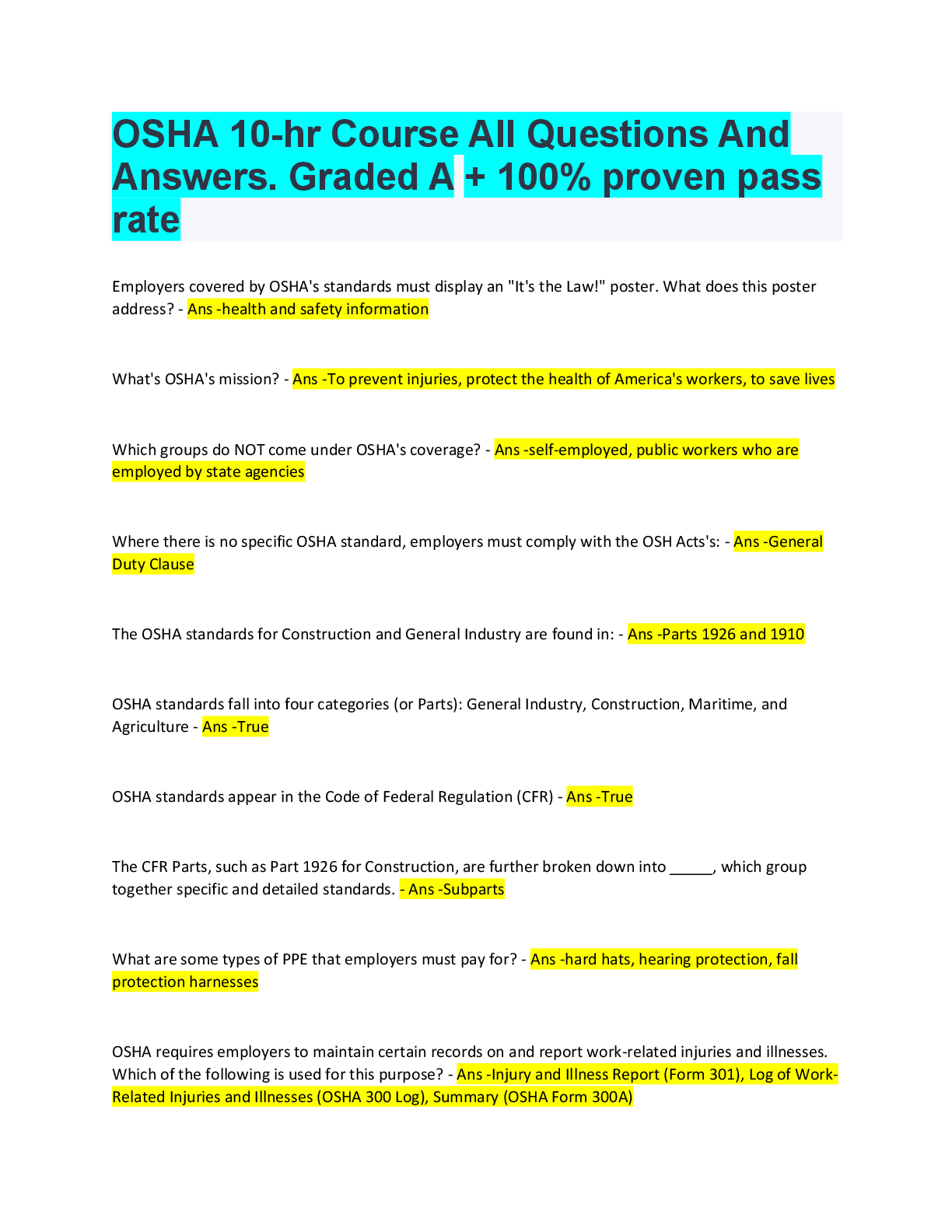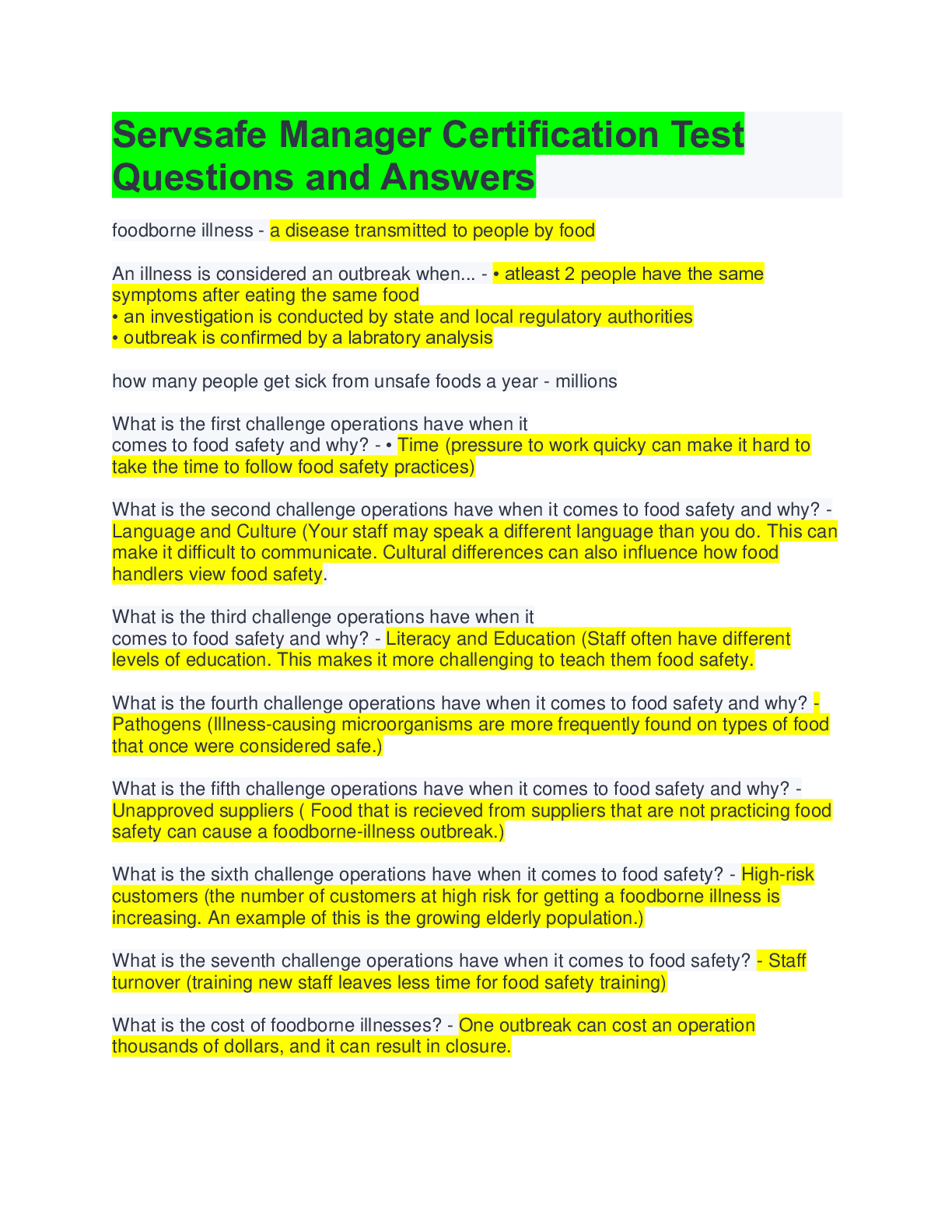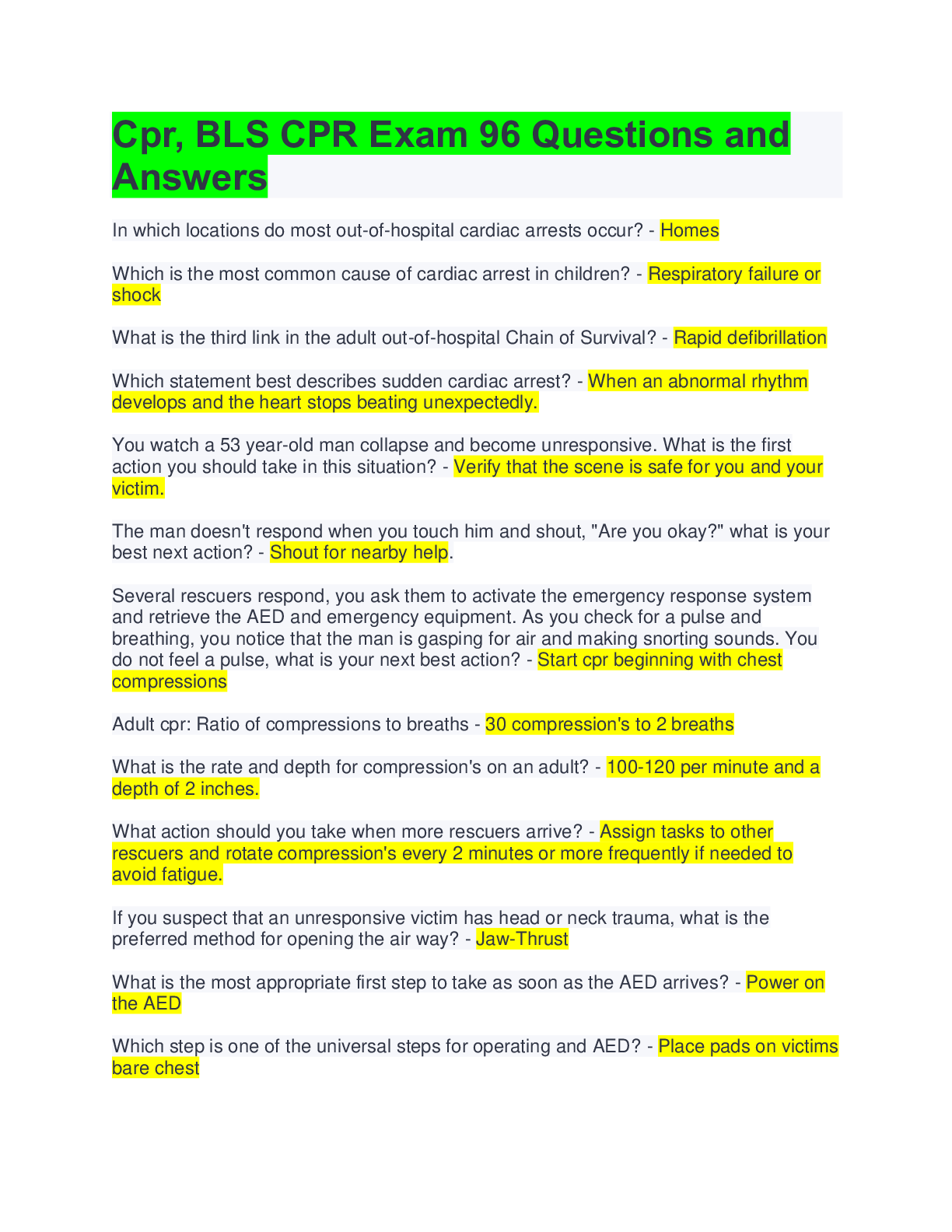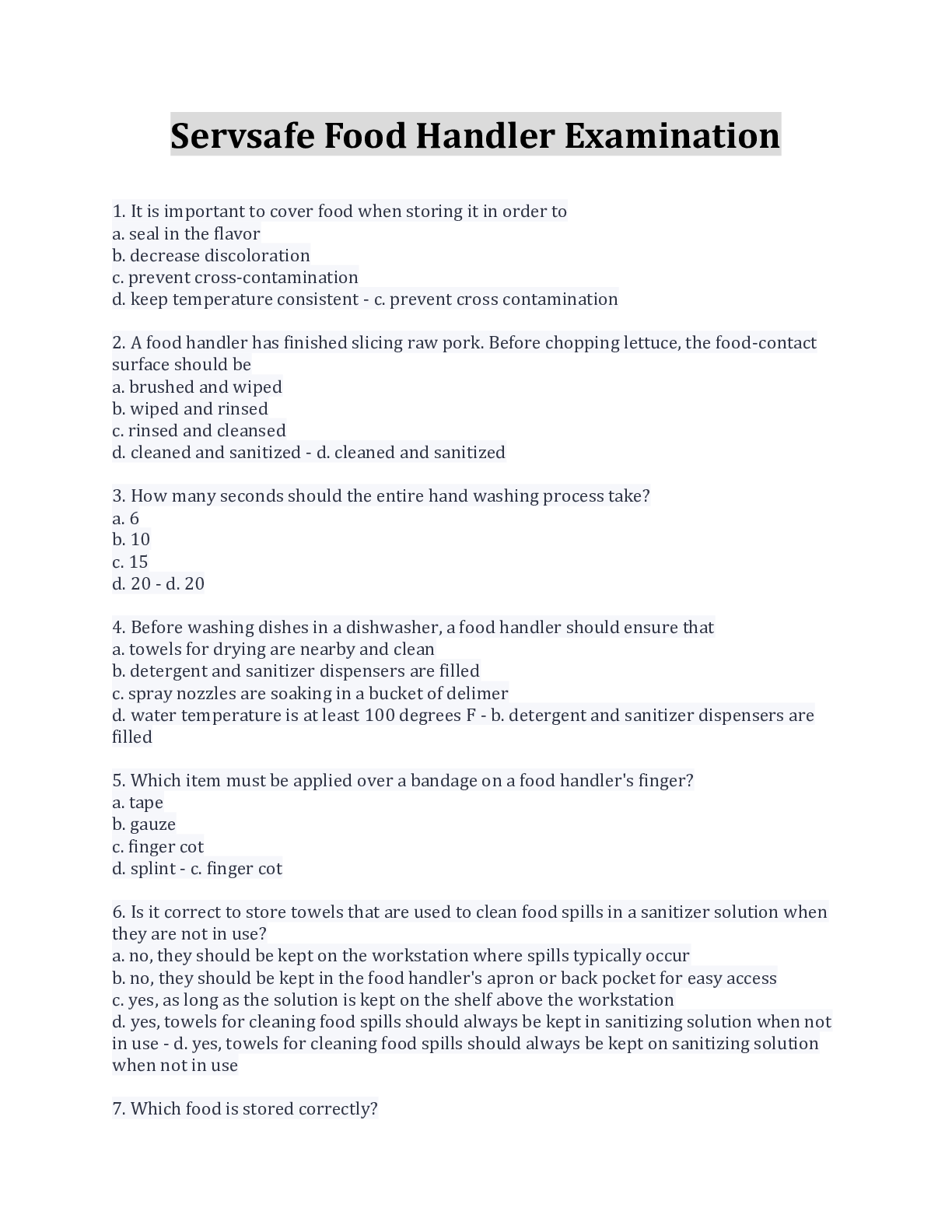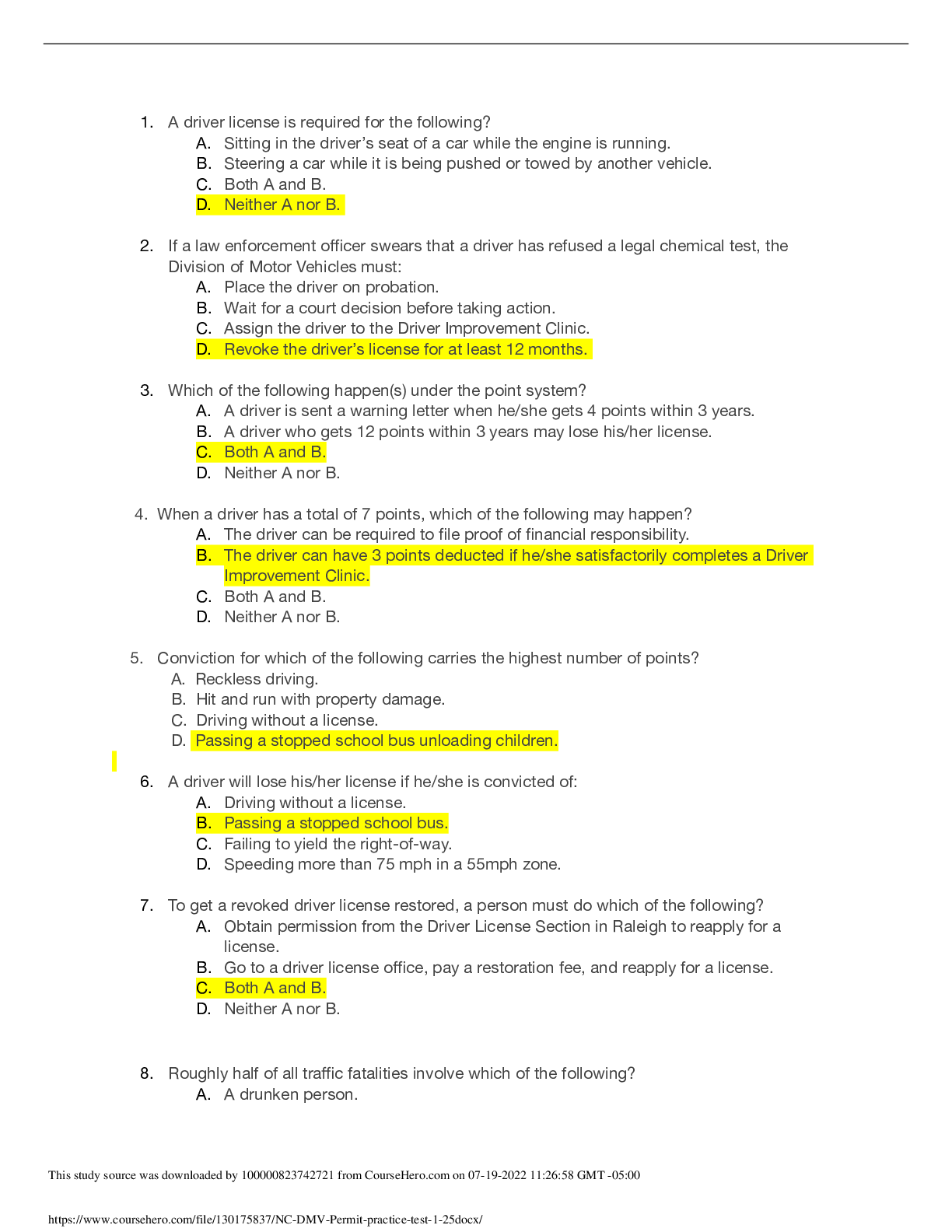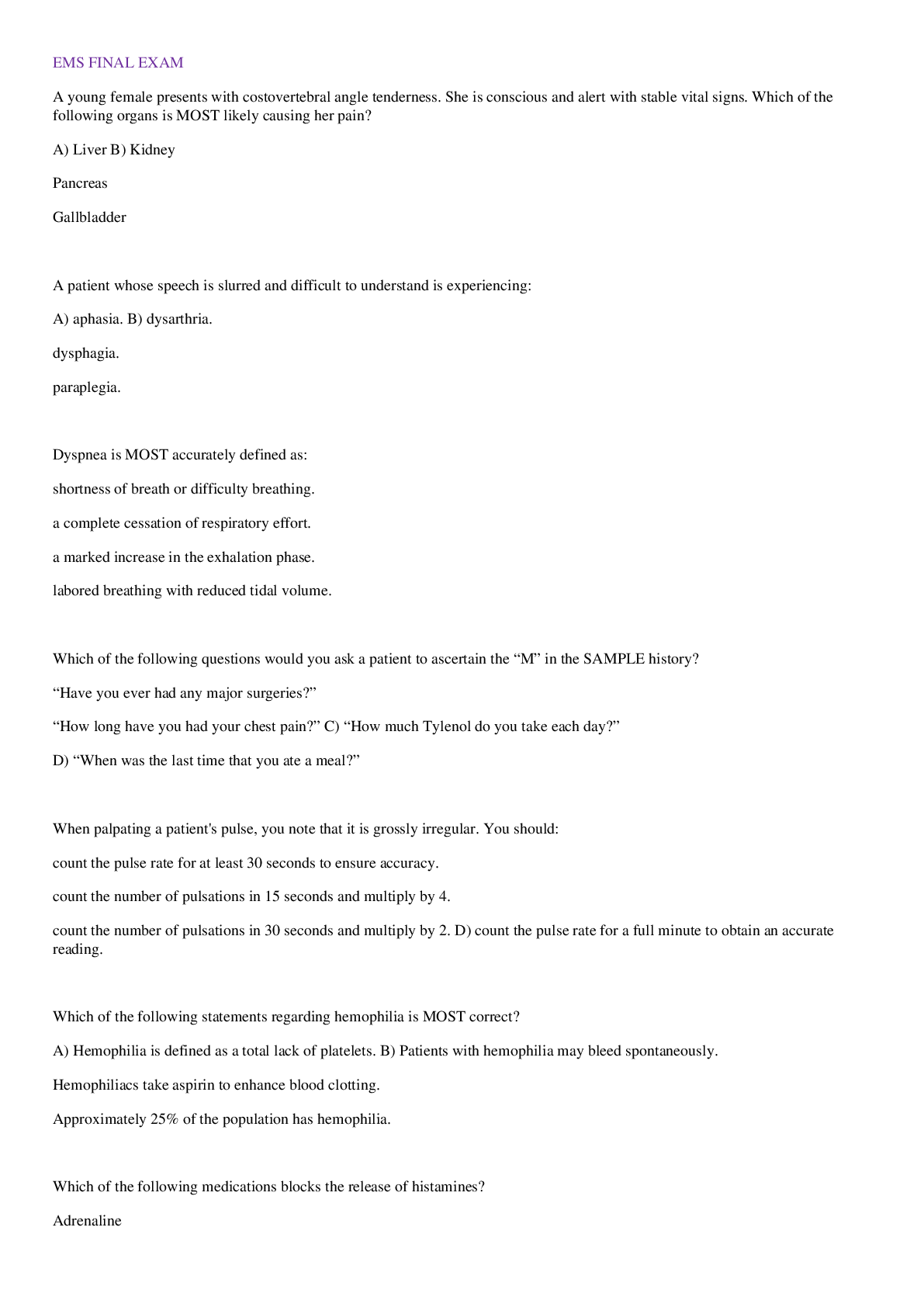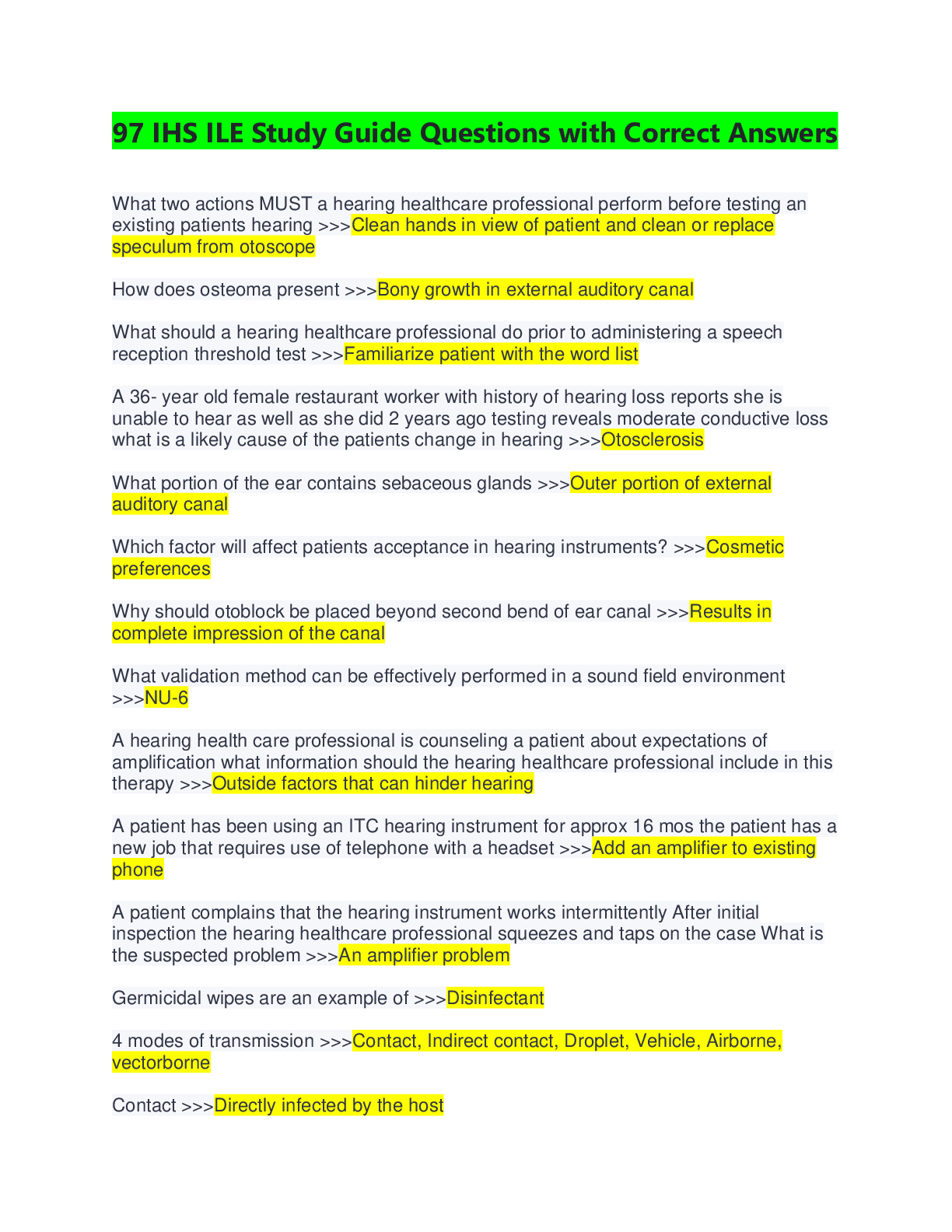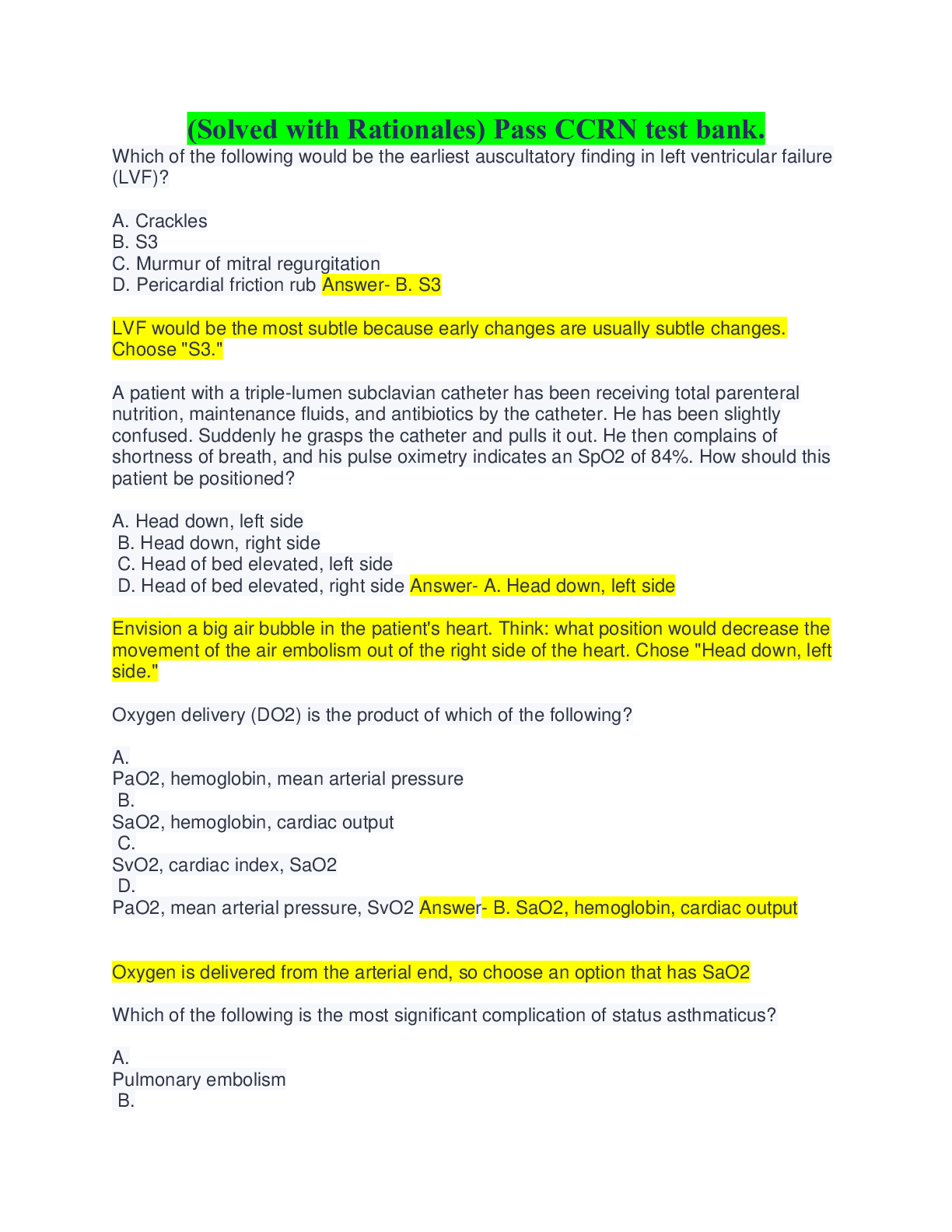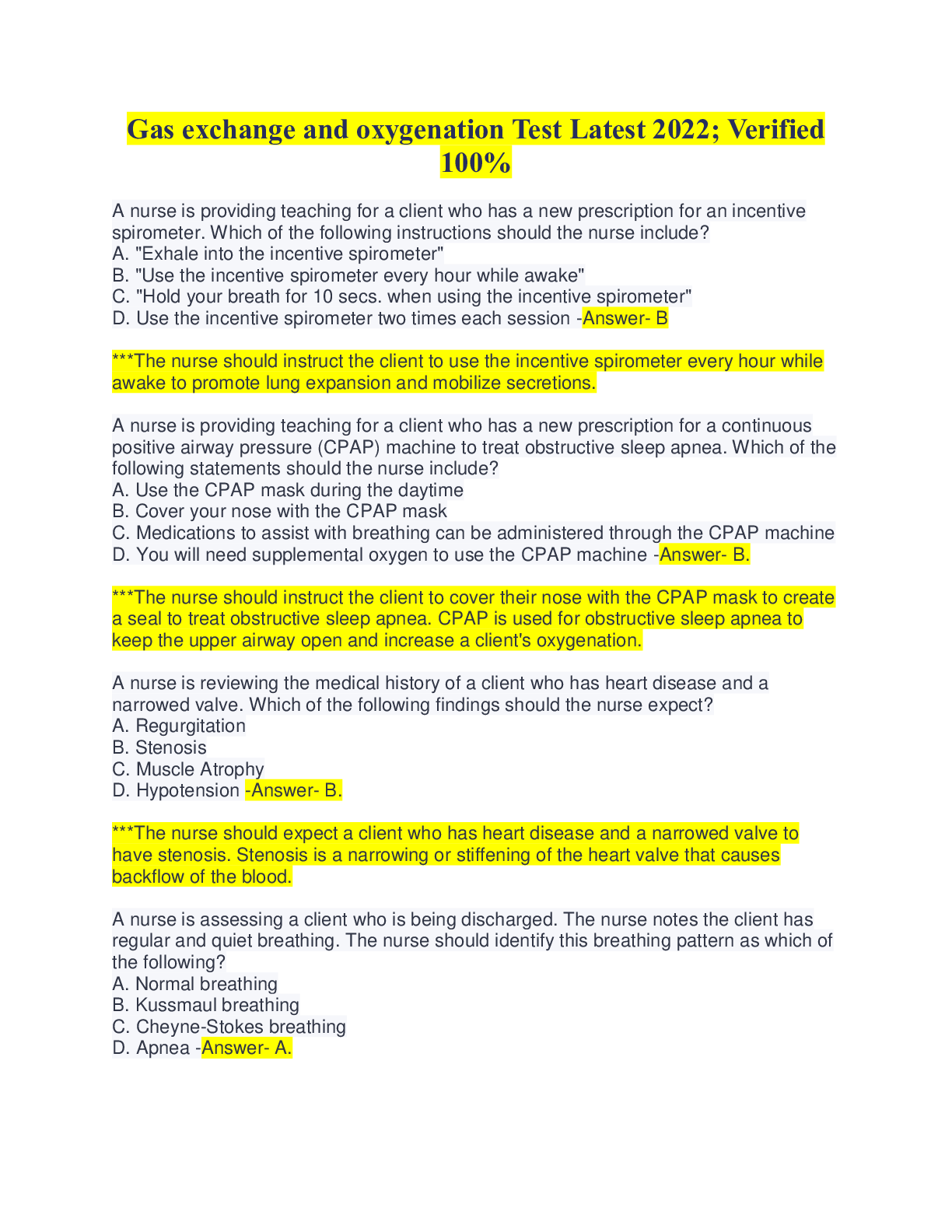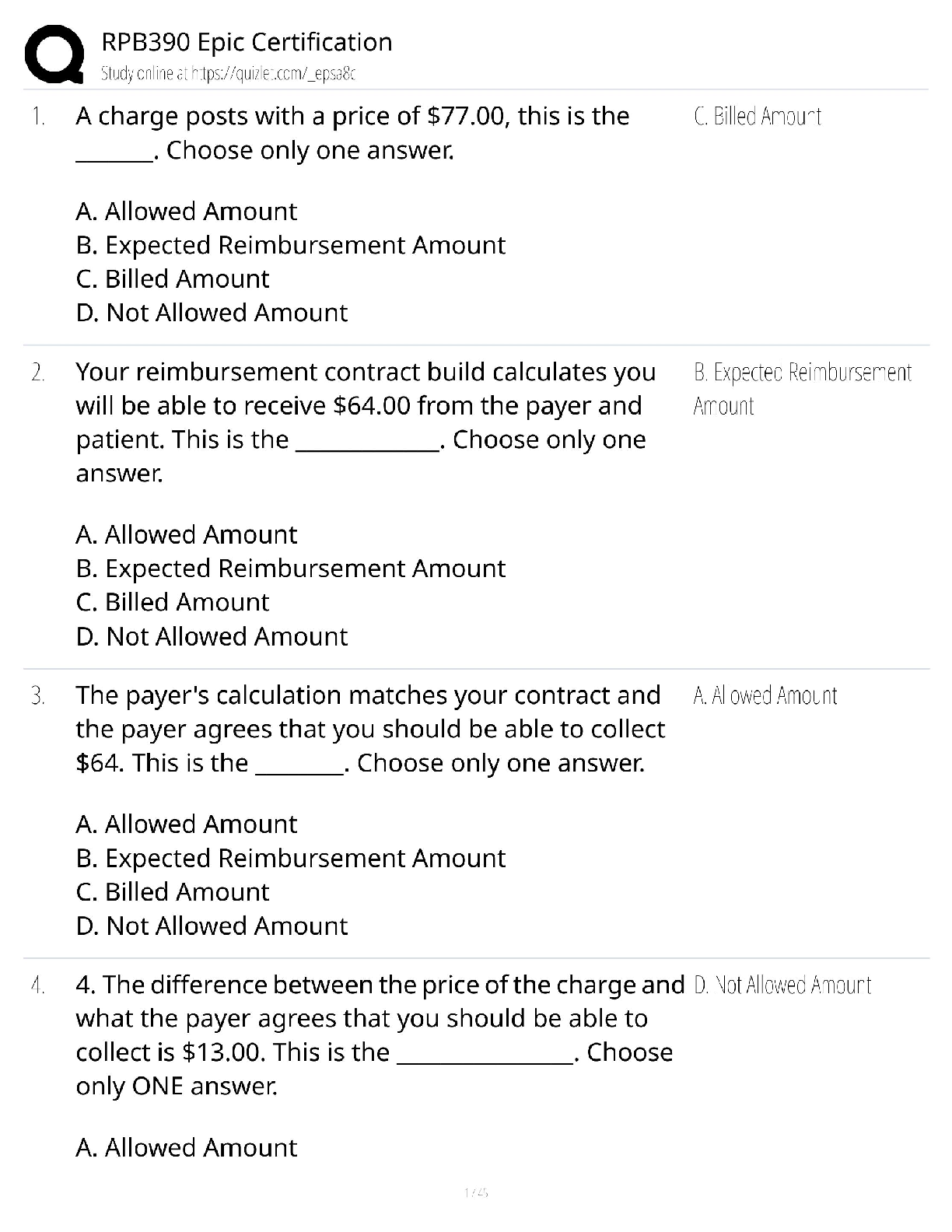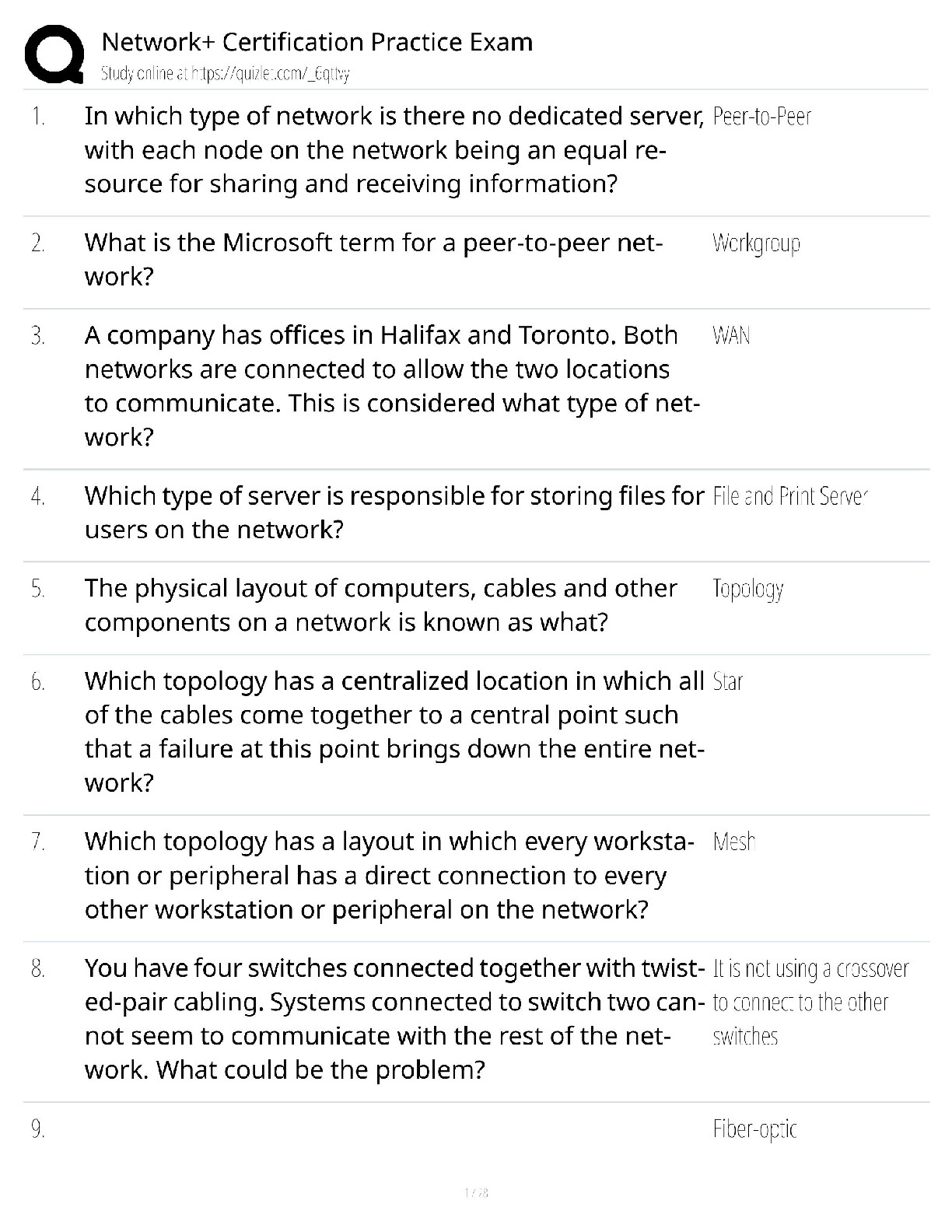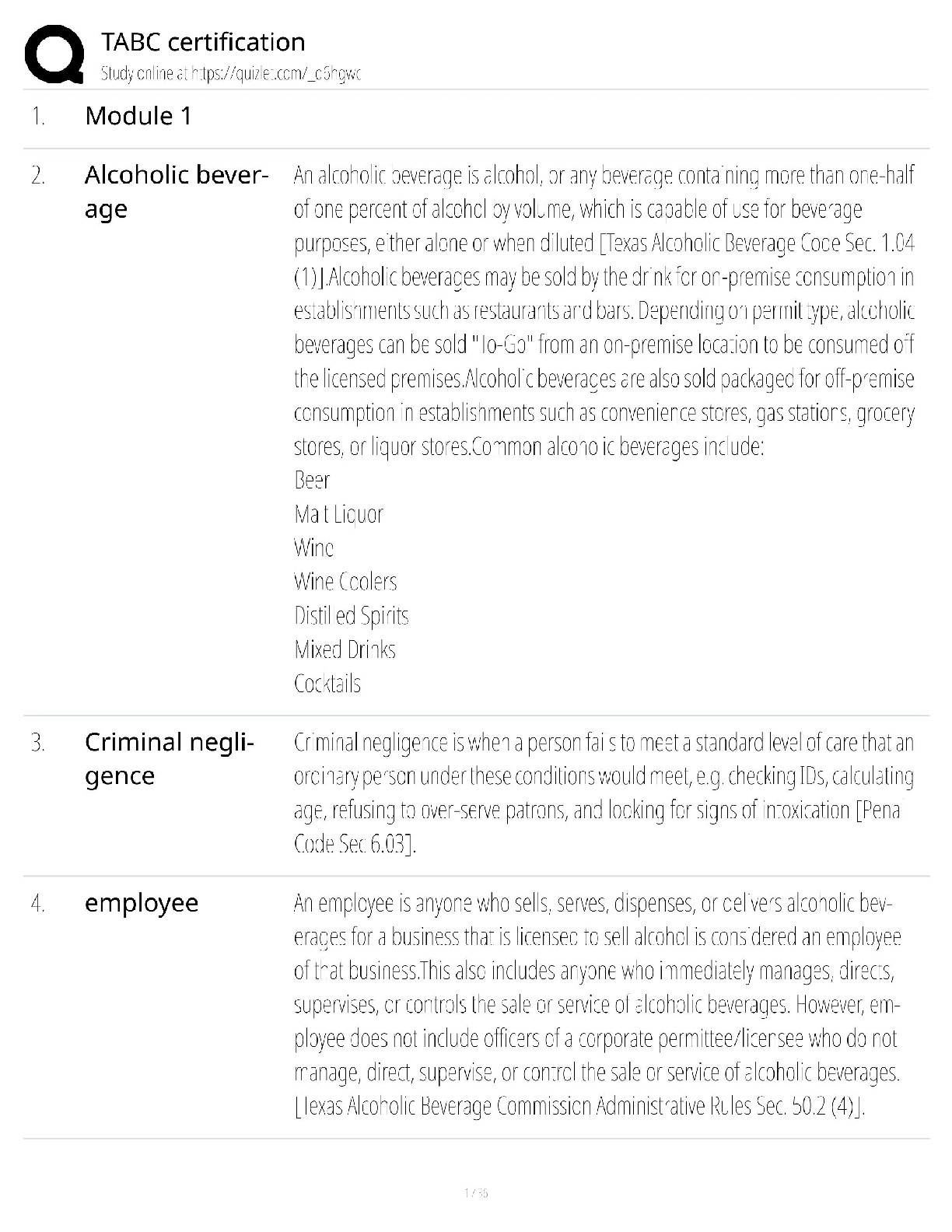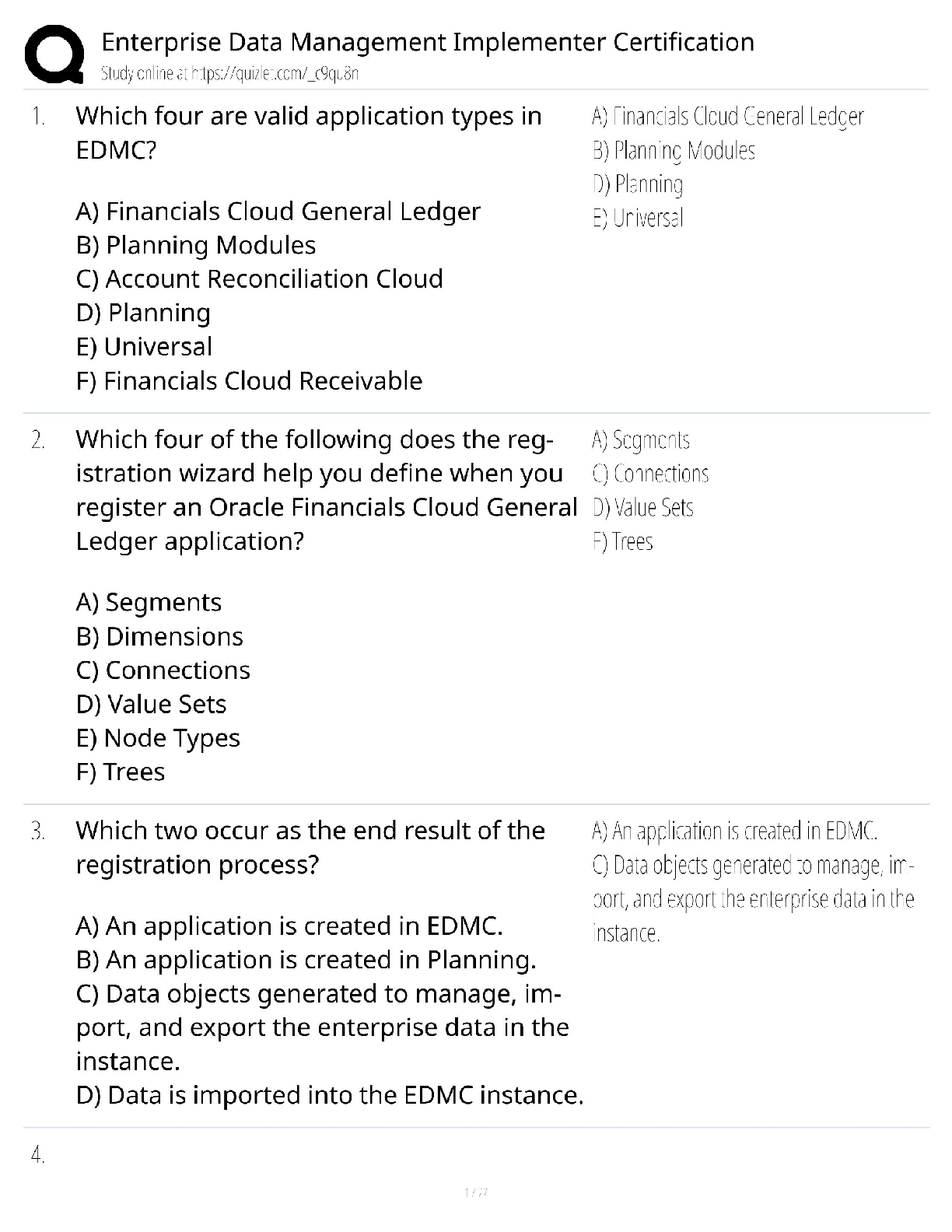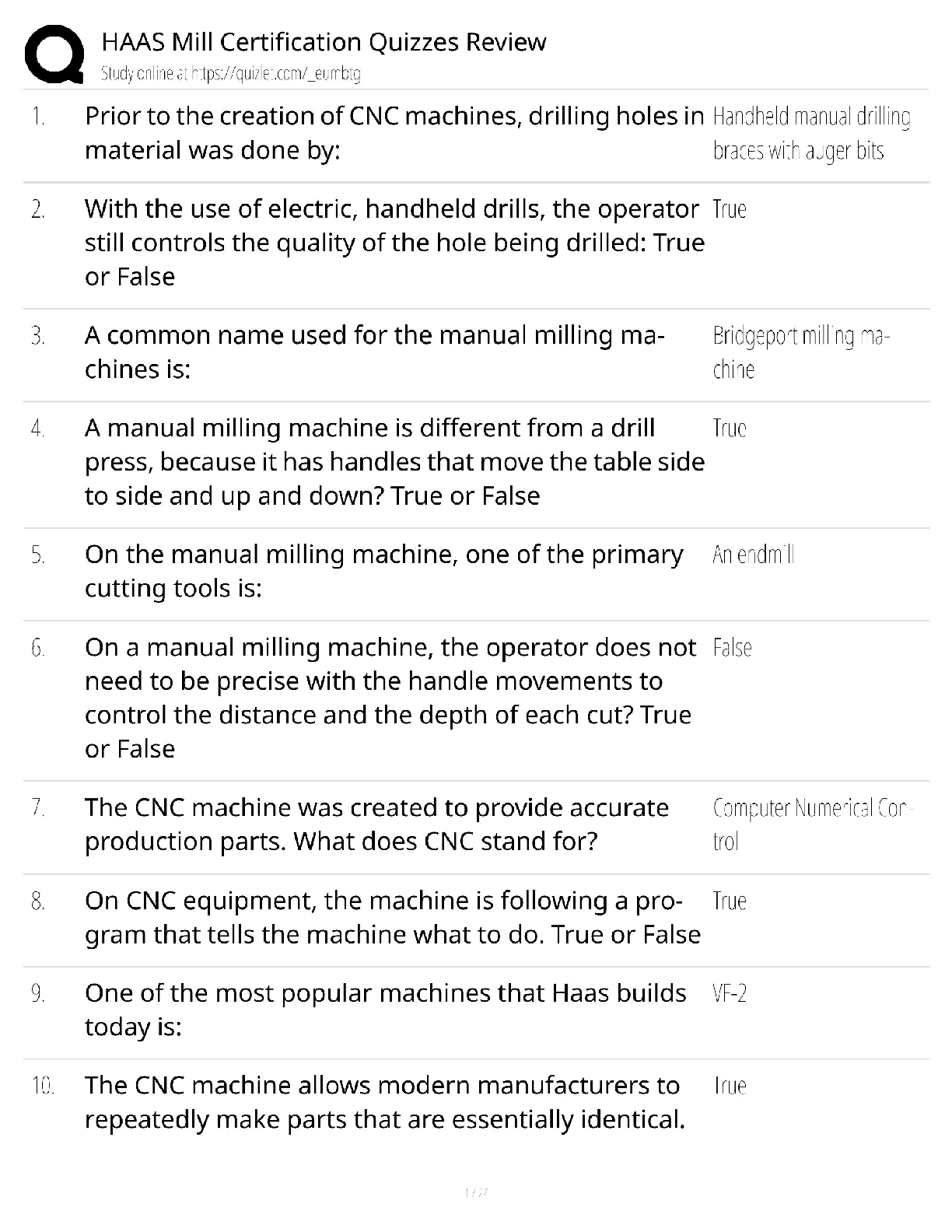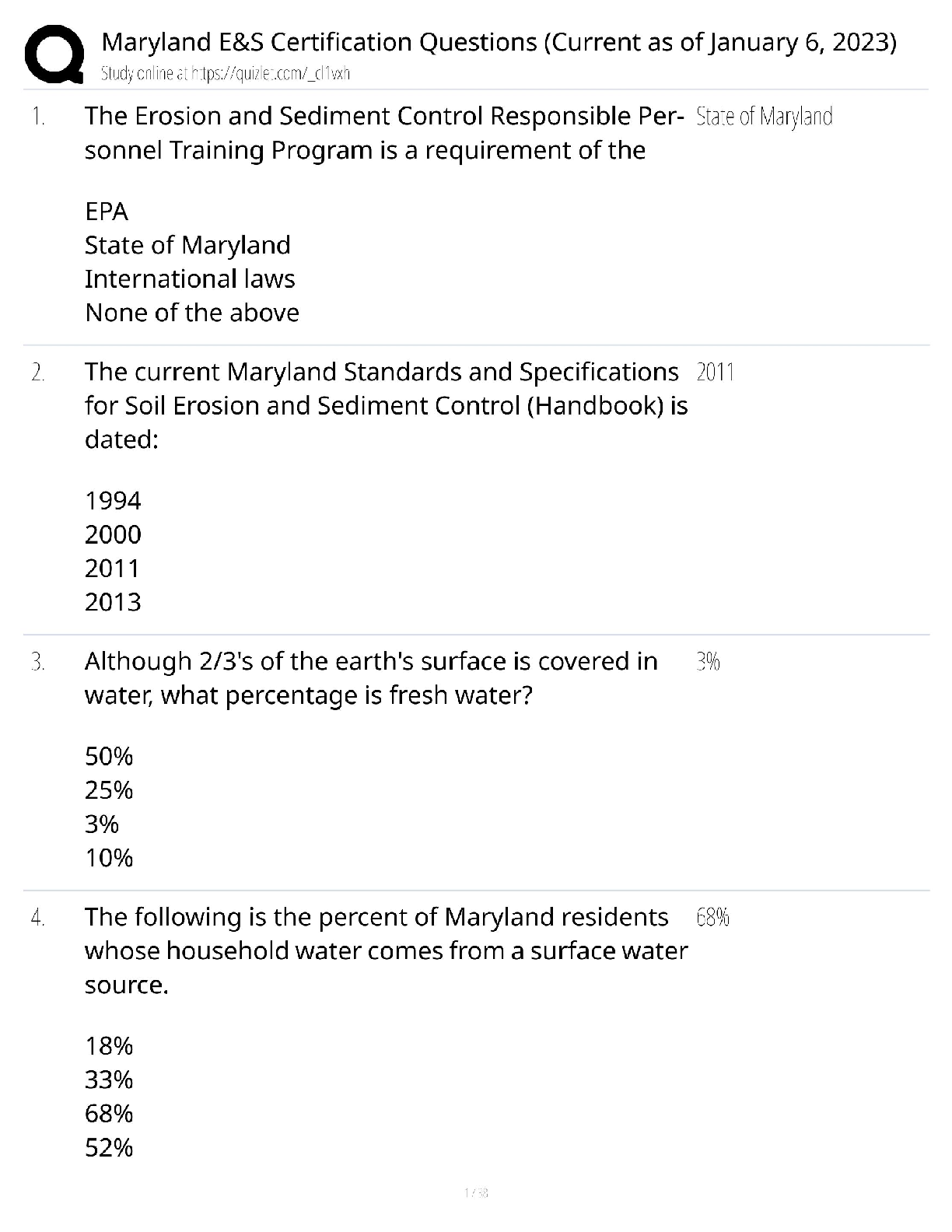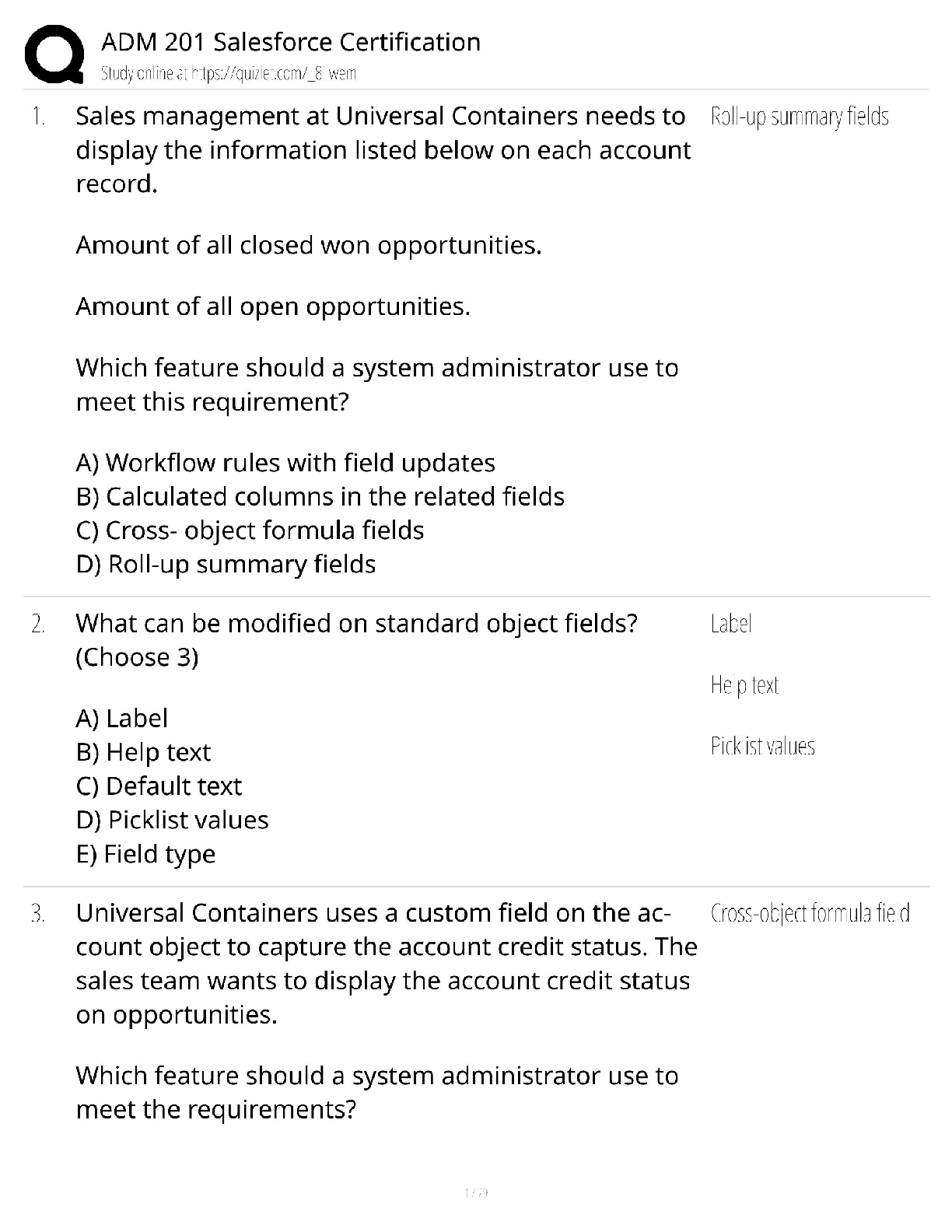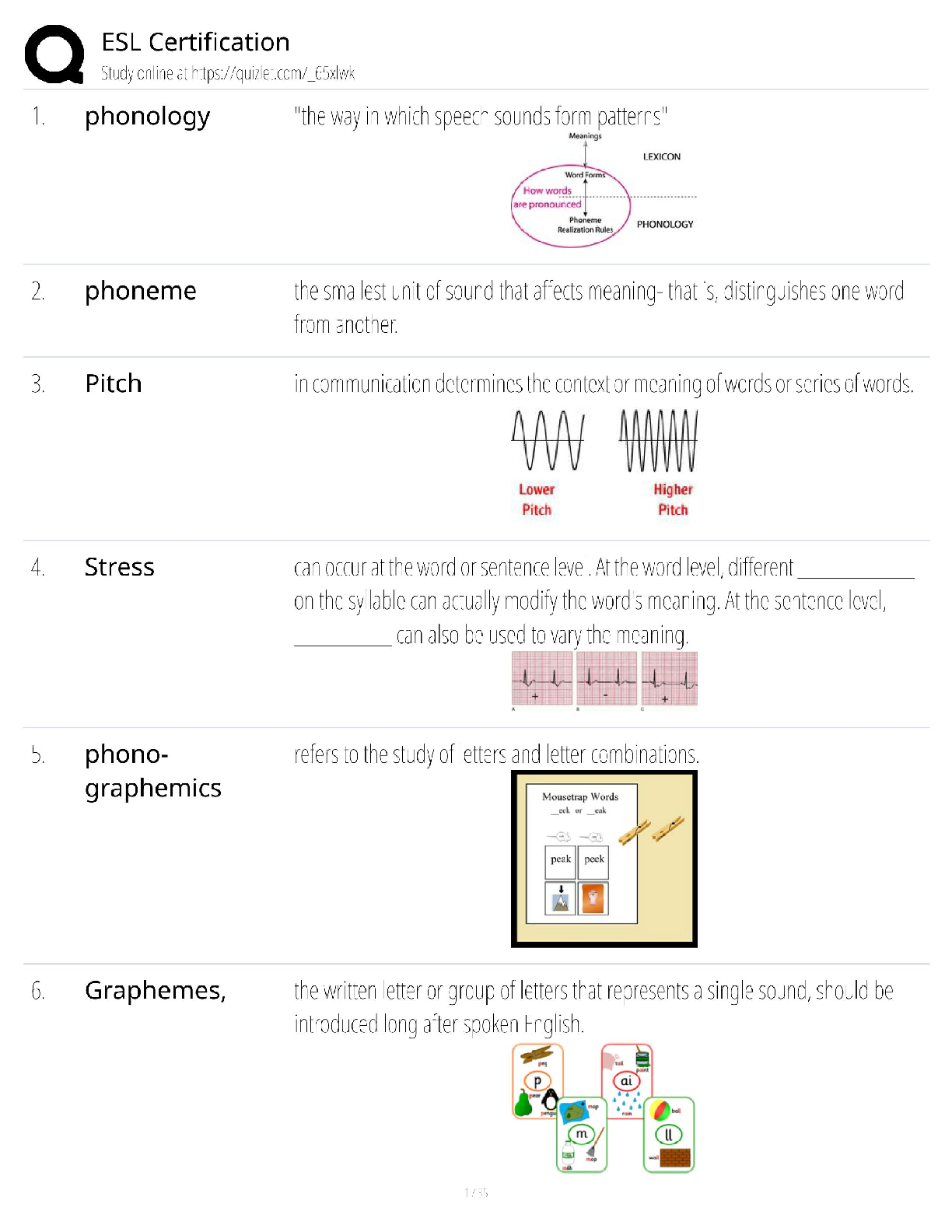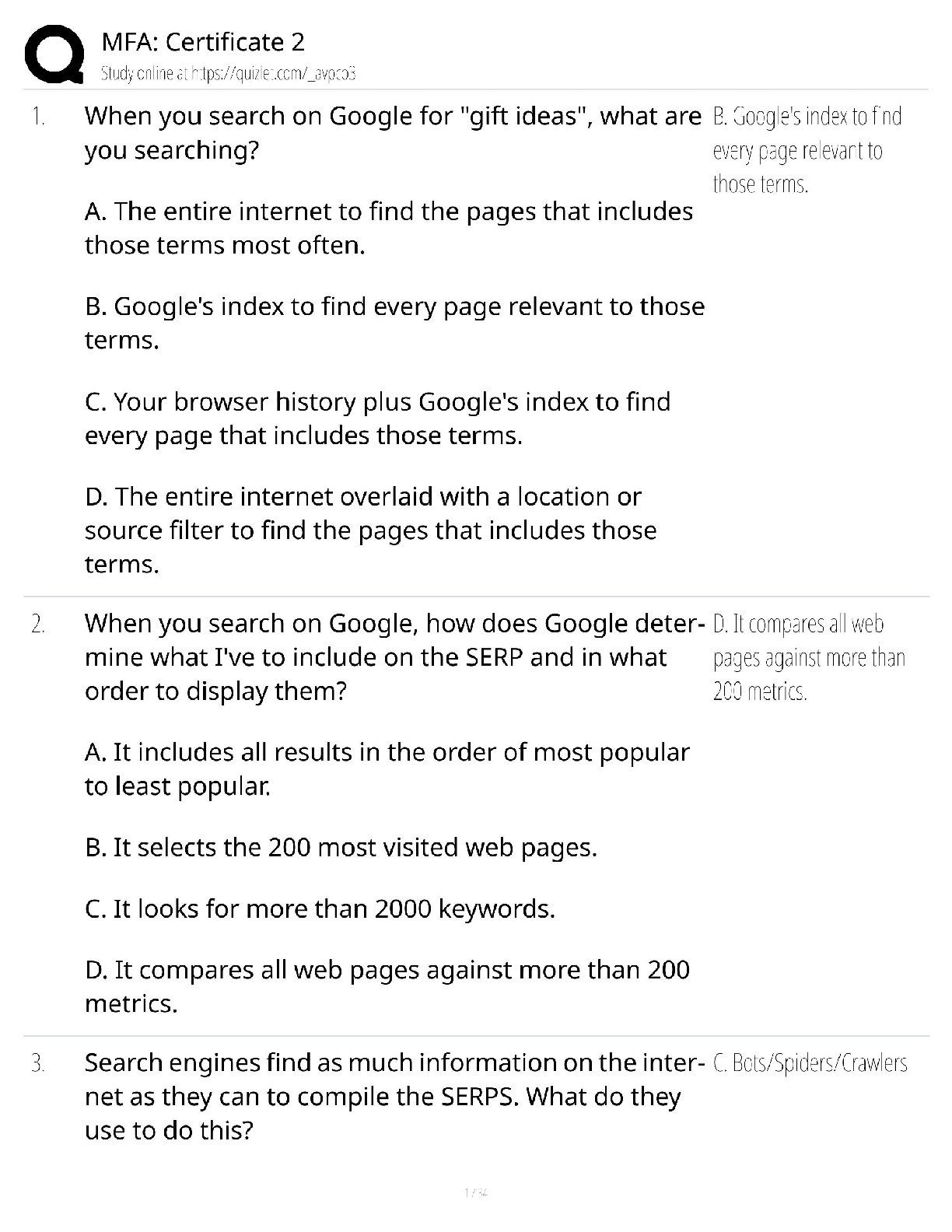Health Care > QUESTIONS & ANSWERS > NREMT Practice Questions: 217 Questions with Correct Answers (All)
NREMT Practice Questions: 217 Questions with Correct Answers
Document Content and Description Below
NREMT Practice Questions: 217 Questions with Correct Answers A 22-year-old female was shot by her husband. Law enforcement is at the scene and has the husband in custody. The patient is conscious, ... but extremely restless, and is pale and diaphoretic. As your partner administers high-flow oxygen, you should: >>>look for and control any bleeding. Common signs and symptoms of a hypertensive emergency include: >>> Shock following major trauma is MOST often the result of: >>>hemorrhage A 19-year-old female has a closed, swollen deformity to her left forearm. You are unable to palpate a radial pulse and the skin distal to the injury is cold and pale. Several attempts to contact medical control have failed and you are approximately 45 miles away from the closest hospital. You should: >>>make one attempt to restore distal circulation by applying gentle manual traction in line with the long axis of the limb. When performing two-rescuer CPR on an adult patient whose airway has not been secured with an advanced device, you should: >>>have your partner pause after 30 compressions as you give 2 breaths. A 50-year-old woman who is conscious and alert complains of a severe migraine headache. When caring for her, you should generally avoid: >>>shining a light into her pupils. You and your partner have secured a trauma patient to a long backboard and are preparing to lift the backboard onto the stretcher. When doing so, you should: >>>ensure that the strongest EMT is positioned at the head of the backboard. Treatment for a responsive 4-year-old child with a mild airway obstruction, who has respiratory distress, a strong cough, and normal skin color, includes: >>>supplemental oxygen and transport. You receive a call for a 3-year-old girl with respiratory distress. When you enter her residence, you see the mother holding the child, who does not acknowledge your presence. This finding indicates that the child: >>>has severe hypoxia. You are performing a secondary assessment on a severely injured patient while en route to a trauma center. During the assessment you note that the patient's respiratory rate has increased. You should: >>>repeat the primary assessment and treat as needed. A 60-year-old man presents with a severe right-sided headache. He is conscious and alert. As you are assessing him, he tells you that the left side of his body feels weak. Hisblood pressure is 190/100 mm Hg, pulse is 88 beats/min, and respirations are 14 breaths/min. His past medical history includes diabetes, arthritis, and hypertension. You should be MOST concerned with: >>>the presence of hemiparesis. A man is experiencing a severe allergic reaction after being stung by a scorpion. He does not have his own epinephrine; however, his wife is allergic to bees and has a prescribed epinephrine auto-injector. You should: >>>provide rapid transport and consider an ALS rendezvous. Which of the following injuries is MOST indicative of child abuse? >>>Bruising to the upper back. A football player complains of severe neck pain and tingling in his arms and legs after being tackled. He is conscious and alert, has a patent airway, and is breathing adequately. He is in a supine position and is still wearing his helmet, which is tightfitting. The MOST appropriate treatment for this patient includes: >>>manually stabilizing his head with his helmet still on, removing the face mask, securing him onto a long backboard, and restricting spinal motion with a lateral head stabilizer. Which of the following structures is the primary pacemaker, which sets the normal rate for the heart? >>>Sinoatrial node. Which of the following is MOST indicative of a primary cardiac problem? >>>Irregular pulse EMTs arrive at a one-vehicle crash on the left shoulder of a 3-lane highway. The fire department has parked their apparatus on the left shoulder, behind the crashed vehicle. The ambulance should be parked: >>>past the crashed vehicle, on the left shoulder. Which of the following actions demonstrates an EMT's knowledge of crime scene preservation? >>>Advising a law enforcement officer after moving a coffee table to access a critically injured patient. A 16-year-old, 125-pound male ingested a bottle of aspirin approximately 20 minutes ago. Medical control orders you to administer activated charcoal in a dose of 1 g/kg. How much activated charcoal should you administer? >>>57 g When providing care to multiple patients at the scene of a mass-casualty incident, your goal should remain focused on: >>>transporting patients to the hospital. As you begin ventilating an unresponsive apneic man, you hear gurgling in his upper airway. Your MOST immediate action should be to: >>>quickly turn the patient onto his side so secretions can drain. Which of the following signs or symptoms is MOST indicative of cerebral hypoxia? >>>Decreased level of consciousness. [Show More]
Last updated: 3 years ago
Preview 1 out of 18 pages
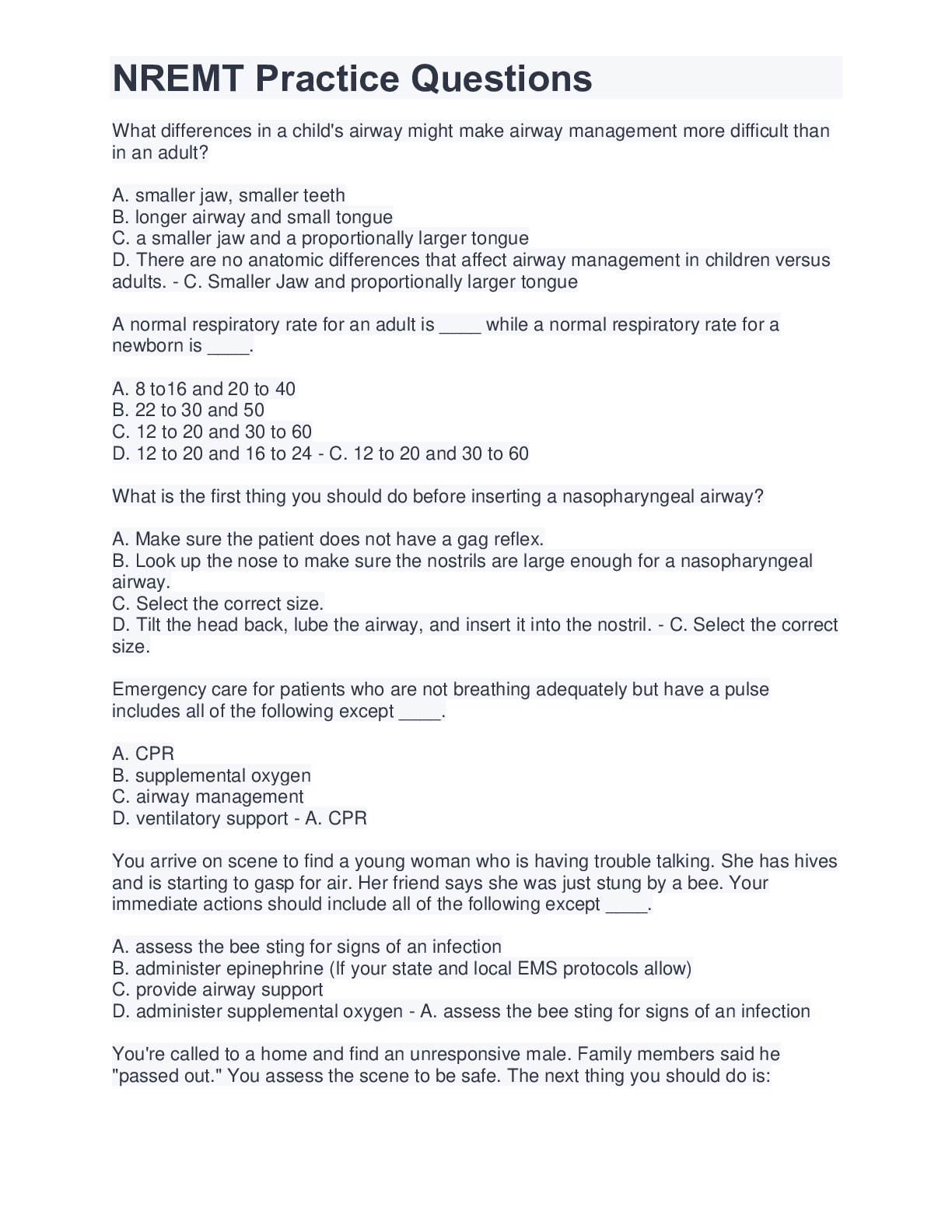
Buy this document to get the full access instantly
Instant Download Access after purchase
Buy NowInstant download
We Accept:

Also available in bundle (1)
Click Below to Access Bundle(s)

All combined NREMT Exam Questions and Answers in a Bundle Solutions
150 EMT FISDAP FINAL Questions with Correct Answers EMT FISDAP FINAL 188 Questions with Correct Answers 184 EMT Final Practice Fisdap Questions with Correct Answers EMT Final Exam 1279 Questi...
By Professor Lynne 3 years ago
$16
15
Reviews( 0 )
$11.00
Can't find what you want? Try our AI powered Search
Document information
Connected school, study & course
About the document
Uploaded On
Aug 11, 2022
Number of pages
18
Written in
All
Additional information
This document has been written for:
Uploaded
Aug 11, 2022
Downloads
0
Views
176

